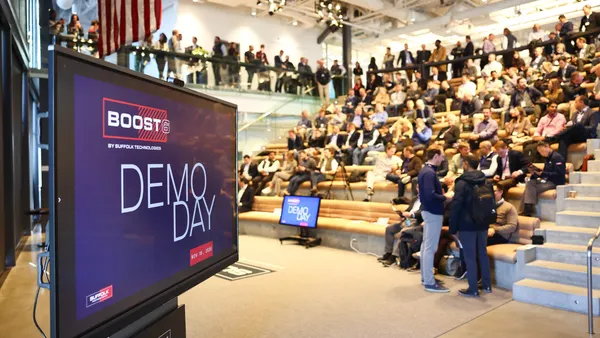Dive Brief:
- Construction, design and modular manufacturing firm Skender has announced a deal with Z Modular to build multifamily housing components using Z Modular’s proprietary VectorBloc system.
- VectorBloc is a self-bracing, steel structural system with tight tolerances that promote even stacking during assembly on-site and ensure a secure fit, according to Z Modular. This allows for taller structures and reduces design and construction costs through "concentrating the load-bearing and connection functions on a standard, scalable, precision pre-engineered component,” the firm said.
- Skender will manufacture the components in its soon-to-be-open Chicago warehouse. The company will use the VectorBloc system to build in several formats but will start with three-flat and mid-rise workforce housing. Skender says its manufacturing process will accelerate the construction phase by 40% and lower project costs by up to 15%.
Dive Insight:
One of Skender’s goals in pursuing the Z Modular deal is to help alleviate the affordable housing shortage in Chicago, which is a familiar story in other major U.S. metros as well. Modular building has been called a potential game changer when it comes to solving that particular problem.
In fact, last spring, the New York City Department of Preservation and Housing issued a request for proposals for a mixed-use, affordable housing project in Brooklyn, and one of the requirements for potential developers was that they use modular construction methods. The housing project is the first of its kind for the department under its Housing New York 2.0 program. Using modular construction and other strategies, the 10-year plan aims to create or preserve 200,000 affordable homes by 2022 and 300,000 homes by 2026.
Modular construction advocates have suggested the method as a solution to the affordable housing crisis because the reduced cost of design and construction translates to cheaper rents and purchase prices for for-sale units. Lower costs also encourage developers to build more housing, according to nonprofit research organization Sightline Institute.
The cost-cutting potential also allows cities to stretch limited public funding farther and across more projects. In addition, whether the construction process consists of assembling components on-site or stacking fully constructed modules, usually less labor is required, which also brings down costs.
In addition, quality can be improved, or at least made more consistent, because modular construction uses an assembly line process. Factory workers become experts in their specific tasks, which helps turn out a predictable product.












